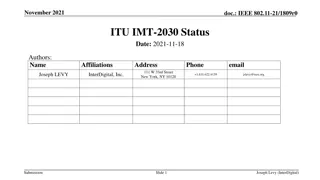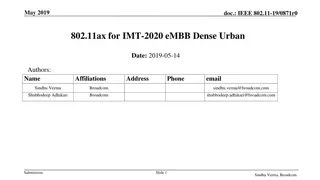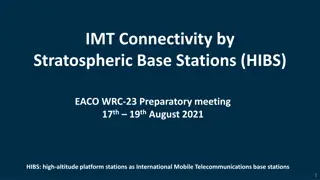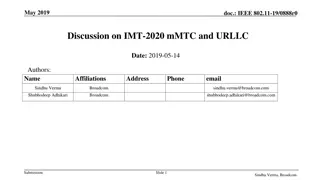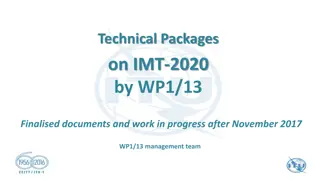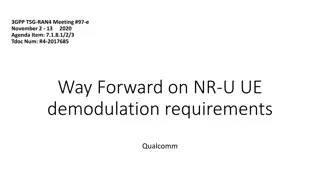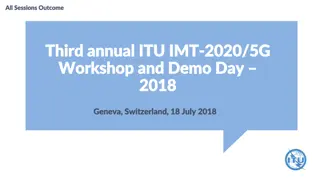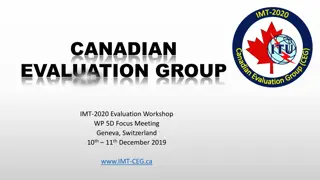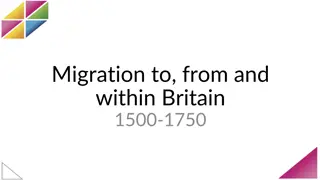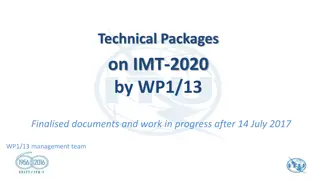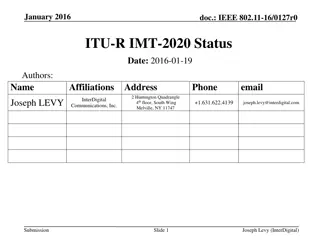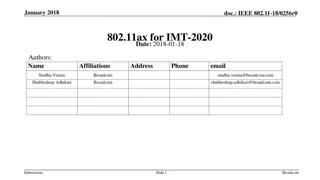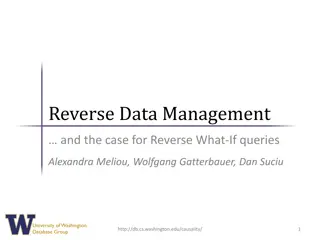IMT-2020 Usage Scenarios and Test Environments Summary
This document summarizes the IMT-2020 usage scenarios, test environments, and evaluation configurations for IEEE 802.11-17/1820r1. It covers enhanced mobile broadband (eMBB), massive machine-type communications (mMTC), and ultra-reliable and low-latency communications (URLLC). Test environments include indoor hotspot, dense urban, rural, urban macro-mMTC, and urban macro-URLLC. Requirements for candidate RITs/SRITs are also explained.
Download Presentation

Please find below an Image/Link to download the presentation.
The content on the website is provided AS IS for your information and personal use only. It may not be sold, licensed, or shared on other websites without obtaining consent from the author.If you encounter any issues during the download, it is possible that the publisher has removed the file from their server.
You are allowed to download the files provided on this website for personal or commercial use, subject to the condition that they are used lawfully. All files are the property of their respective owners.
The content on the website is provided AS IS for your information and personal use only. It may not be sold, licensed, or shared on other websites without obtaining consent from the author.
E N D
Presentation Transcript
MOLECULAR ORBITAL THEORY Molecular orbital (MO) theory was developed by F. Hund and R.S. Mulliken in 1932
Linear combination of atomic orbital's (LCAO) MO = A + B and * are formed as : = A + B ( Bonding MO) * = A B ( Anti bonding MO )
Conditions for the Combination of Atomic Orbitals Same energy. Same symmetry Must overlap to the maximum extent
TYPES OF MO ORBITALS (sigma), (pi), (delta)
sigma () molecular orbitals are symmetrical around the bond-axis pi ( ) molecular orbitals are not symmetrical
Energy of the MO Orbitals for O2 andF2 Energy of the MO Orbitals for Other molecules
MO ELECTRONIC CONFIGURATION FOR H2 Number of Electrons = 2
MO ELECTRONIC CONFIGURATION FOR He2 NUMBER OF ELECTRONS = 4 Bond order of He2 is (2 2) = 0
Lithium molecule Li2 No. of Electrons = 6
CARBON MOLECULE C2 No Of Electrons = 12



